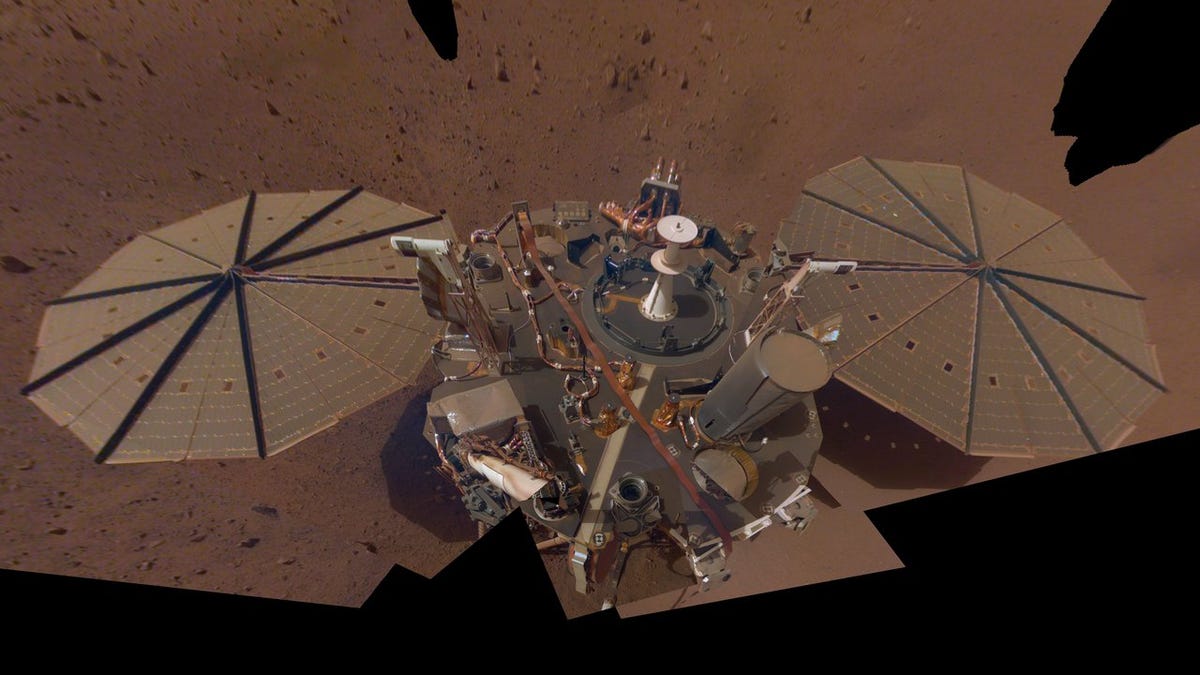NASA Mars robot hears planet grumble during 90-minute-long marsquake
InSight has been feeling some good, good, good vibrations on the red planet.
NASA's Mars InSight lander had two big reasons to celebrate on Sept. 18. It marked the lander's 1,000th Martian day (called a "sol") on the red planet, and it's also the day it detected a fantastic nearly 1.5-hour-long marsquake estimated to hit a magnitude of 4.2. Talk about shaking things up.
It's been quite a run of marsquakes for InSight lately. It also picked up quakes of magnitudes 4.1 and 4.2 on Aug. 25. All three of these recent shakers beat out the lander's previous record holder for magnitude, a 3.7 picked up in 2019. As NASA JPL pointed out in a statement on Wednesday, a 4.2 quake has five times the energy of a 3.7.
Marsquakes tell a story. "The waves change as they travel through a planet's crust, mantle, and core, providing scientists a way to peer deep below the surface," NASA said. "What they learn can shed light on how all rocky worlds form, including Earth and its moon."
InSight landed on Mars in late 2018 and deployed its seismometer in December of that year. The lander's stationary status might make it seem less compelling than its wheeled rover kin, but the mission has revealed lots of new information about mysterious Mars.
A group of studies released in early 2020 used InSight's data to paint an intriguing picture of an active Mars underground. InSight established, without a doubt, that Mars is a seismically active planet. Another outpouring of studies from earlier this year showed how scientists could use InSight's work to map the interior of another planet for the first time.
InSight's recent marsquakes detections are a triumph for another reason. A thick layer of dust on the lander's solar panels put the mission in a precarious position. NASA was expecting a whirlwind to come along and clean them off, but that hasn't happen. To keep the lander operating at a high level, the InSight team came up with a clever way to clean some of the dust off by dribbling a bit of dirt onto the panels. It worked.
Scientists are still studying the most recent quake, but they've already figured out that the 4.2 quake from August came from 5,280 miles (8,500 kilometers) away, making it the most distant marsquake yet detected by InSight. The 4.1 originated from a mere 575 miles (925 kilometers) away.
The latest marsquakes data will help build our understanding of the interior of Mars. We know for sure the red planet is giving itself quite a few fair shakes.


